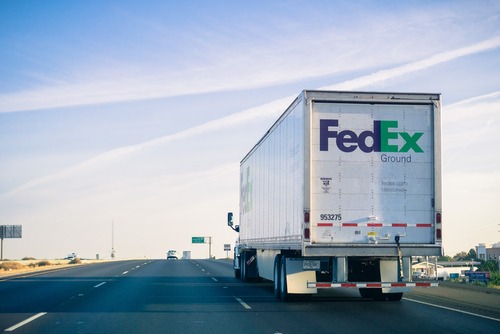
With freight volumes projected to increase by 45 percent by 2045 and the nation’s roadways deteriorating under years of deferred maintenance and wear and tear, the U.S. Chamber of Commerce unveiled a sweeping plan for infrastructure modernization and investment on Thursday.
The four-point plan calls for increasing the federal user fee by 25 cents, creating new public and private financing and funding options for infrastructure projects, streamlining permitting and approvals, and leveraging job-based immigration reform to grow the nation’s workforce.
“It’s time to invest in a 21st century infrastructure system to support and grow our 21st century economy,” U.S. Chamber President and CEO Thomas Donohue said. “It’s time to approach this as a national imperative for long-term growth and competitiveness — not an exercise in parochial politics.”
The user fee would cost the average motorist approximately $9 per month. The nation’s deteriorating roads, meanwhile, cause approximately $40 per month in increased maintenance and operating costs, Donohue noted.
“Our broken infrastructure is also robbing Americans of time with their families. Between 1990 and 2015, the time Americans spend commuting has increased by about 35 minutes a week,” he said.
Fedex Freight President and CEO Mike Ducker echoed concerns about traffic congestion in a panel discussion hosted by the U.S. Chamber of Commerce on Thursday. He noted that 3.2 trillion miles were driven in 2016, contributing to 996 million hours of delays and adding more than $163 billion to the cost of freight.
“Think about every one of those packages or pallets that arrived at your home or business in the month of December,” Ducker told the audience. “And the items that impact our daily lives that are delivered by trucks. We’re making significant investments to create faster, more efficient supply chains. But the weakest link in the chain remains our country’s road network. That’s an issue that affects the entire country. And it’s getting worse, fast. Infrastructure issues impact everyone, regardless of income, profession or political party.”
Ducker also echoed Donahue’s call for bipartisan collaboration on an infrastructure plan, citing widespread agreement that the nation’s infrastructure needs to be funded and modernized.
“Not just to benefit commerce – but that’s important,” he said. “But to address safety as well. Because let’s face it, the status quo is impeding our economic growth and creating a dangerous working environment for truckers across America.”
Ducker, a member of the American Trucking Associations (ATA) board of directors, outlined an ATA plan that calls for a 20-cent gas user fee to be phased in over four years and assessed at the terminal rack. It would generate $340 million over 10 years, which would support the Highway Trust Fund, the National Priorities Program and the Local Priorities Program.
But Ducker said ATA supports the U.S. Chamber of Commerce’s plan to phase in a 25-cent per gallon fee over five years, noting that the “proposal meets necessary criteria for a solution of this magnitude, creating long-term funding that is sustainable, that is easy and inexpensive to pay and collect, has a low evasion rate, that is tied to highway use and does not hamper interstate commerce.”
Ducker also addressed the need to modernize trucking equipment standards to keep pace with new advancements in technology. Increasing the national standard for twin trailers from 28 to 33 feet would be “a big step forward,” Ducker said, adding 18 percent in trailer capacity while reducing the number of trucks on the road.
Meanwhile, Donohue also outlined the Chamber’s proposal to help streamline permitting and approvals for transportation projects, noting that funding and financing “won’t get the job done” without permitting reform.
“The Chamber believes that all federal infrastructure approvals should be completed within two years,” Donahue said. “State and local projects benefiting from federal funding or financing should also adhere to a two-year timeline, which should run concurrent to the federal process. And to help streamline permitting and eliminate duplicative reviews, a single lead agency should shepherd a project through the process from start to finish.”
Donahue also voiced support for immigration reform to help build a workforce with the skills to tackle infrastructure projects.
“We simply don’t have enough workers ready and able to take on new projects,” he said. “Nearly 80 percent of construction firms report that they are having a hard time finding qualified workers. At the same time, by some estimates, every $1 million in additional infrastructure spending means an additional six to seven construction jobs. Who is going to fill those positions? And when you’re talking about a $1 trillion infrastructure package — well, you do math.”
Donahue concluded that infrastructure investment and modernization was an opportunity to leave something “significant, something long-lasting and something long-overdue” for future generations.